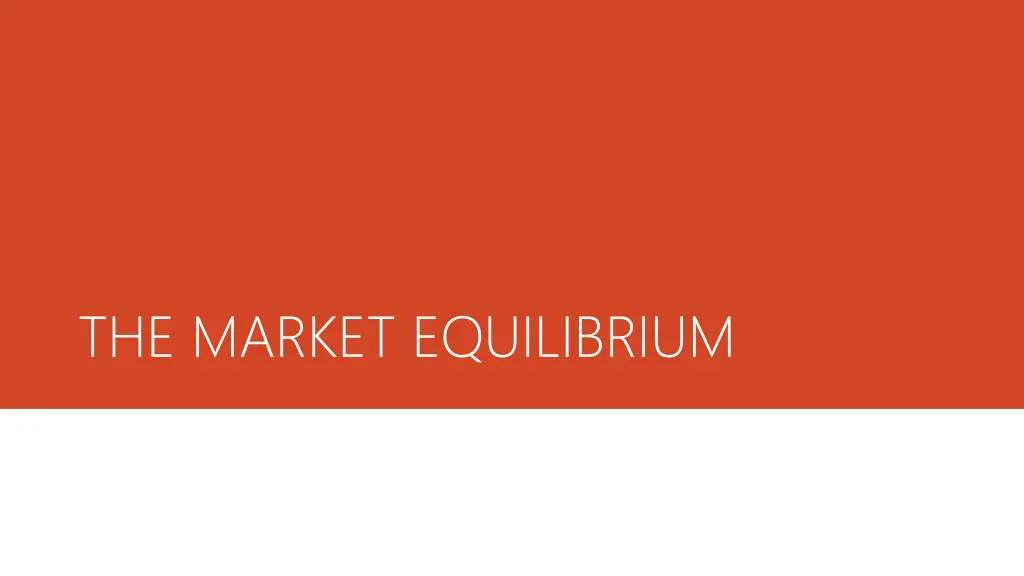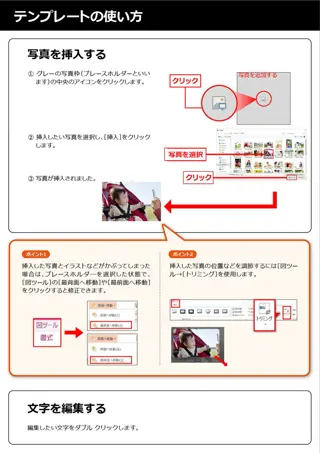
Understanding Market Equilibrium
Explore the concept of market equilibrium where supply meets demand, leading to a balance in prices and quantities. Learn about the dynamics of surplus and shortage in the market and how prices adjust to reach equilibrium.
Download Presentation

Please find below an Image/Link to download the presentation.
The content on the website is provided AS IS for your information and personal use only. It may not be sold, licensed, or shared on other websites without obtaining consent from the author. If you encounter any issues during the download, it is possible that the publisher has removed the file from their server.
You are allowed to download the files provided on this website for personal or commercial use, subject to the condition that they are used lawfully. All files are the property of their respective owners.
The content on the website is provided AS IS for your information and personal use only. It may not be sold, licensed, or shared on other websites without obtaining consent from the author.
E N D
Presentation Transcript
Supply and Demand Together P Equilibrium: P has reached the level where quantity supplied equals quantity demanded S D $6.00 $5.00 $4.00 $3.00 $2.00 $1.00 $0.00 Q 0 5 10 15 20 25 30 35 2
Equilibrium price: the price that equates quantity supplied with quantity demanded P S D $6.00 P $0 1 2 3 4 5 6 QD 24 21 18 15 12 9 6 QS 0 5 10 15 20 25 30 $5.00 $4.00 $3.00 $2.00 $1.00 $0.00 Q 0 5 10 15 20 25 30 35 3
Equilibrium quantity: the quantity supplied and quantity demanded at the equilibrium price P S D $6.00 P $0 1 2 3 4 5 6 QD 24 21 18 15 12 9 6 QS 0 5 10 15 20 25 30 $5.00 $4.00 $3.00 $2.00 $1.00 $0.00 Q 0 5 10 15 20 25 30 35 4
Surplus (a.k.a. excess supply): when quantity supplied is greater than quantity demanded P Example: If P = $5, then QD = 9 lattes and QS = 25 lattes resulting in a surplus of 16 lattes S D Surplus $6.00 $5.00 $4.00 $3.00 $2.00 $1.00 $0.00 Q 0 5 10 15 20 25 30 35 5
Surplus (a.k.a. excess supply): when quantity supplied is greater than quantity demanded P Facing a surplus, sellers try to increase sales by cutting price. S D Surplus $6.00 $5.00 $4.00 This causes QD to rise and QSto fall $3.00 which reduces the surplus. $2.00 $1.00 $0.00 Q 0 5 10 15 20 25 30 35 6
Surplus (a.k.a. excess supply): when quantity supplied is greater than quantity demanded P Facing a surplus, sellers try to increase sales by cutting price. S D Surplus $6.00 $5.00 $4.00 This causes QD to rise and QS to fall. Prices continue to fall until market reaches equilibrium. $3.00 $2.00 $1.00 $0.00 Q 0 5 10 15 20 25 30 35 7
Shortage (a.k.a. excess demand): when quantity demanded is greater than quantity supplied P Example: If P = $1, then QD = 21 lattes and QS = 5 lattes resulting in a shortage of 16 lattes S D $6.00 $5.00 $4.00 $3.00 $2.00 $1.00 Shortage $0.00 Q 0 5 10 15 20 25 30 35 8
Shortage (a.k.a. excess demand): when quantity demanded is greater than quantity supplied P Facing a shortage, sellers raise the price, causing QD to fall and QS to rise, S D $6.00 $5.00 $4.00 which reduces the shortage. $3.00 $2.00 $1.00 Shortage $0.00 Q 0 5 10 15 20 25 30 35 9
Shortage (a.k.a. excess demand): when quantity demanded is greater than quantity supplied P Facing a shortage, sellers raise the price, causing QD to fall and QS to rise. Prices continue to rise until market reaches equilibrium. S D $6.00 $5.00 $4.00 $3.00 $2.00 $1.00 Shortage $0.00 Q 0 5 10 15 20 25 30 35 10






















